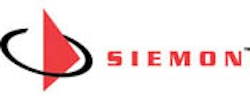Cabling recommendations for 802.11ac wireless access point connections
On the heels of the TIA's ground-laying move to revise its specification for wireless access points, Siemon'sStandards Informant blog recently published its Cabling Recommendations for 802.11ac Access Point Connections. Penned by Siemon's Valerie Maguire, the full text of this technical note is as follows:
"Siemon recommends that two or more category 6A or higher rated shielded channels, deployed as part of an overall zone cabling configuration, are provided to every 802.11ac access point connection for three very important reasons:
1. TSB-162-A, “Telecommunications Cabling Guidelines for Wireless Access Points”, expressly provides the following recommendation and note:
Cabling for wireless access points should be balanced twisted-pair, category 6A or higher, as specified in ANSI/TIA-568-C.2, or two-fiber multimode optical fiber cable, OM3 or higher, as specified in ANSI/TIA-568-C.3.
NOTE – The use of category 6A (or higher) twisted-pair and OM3 (or higher) optical fiber cabling is recommended to support higher data rates and, in the case of twisted-pair cabling, lower temperature rise when remote power is applied.
2. As highlighted in the TIA note, temperature rise resulting from Type 2 PoE used to power 802.11ac access points should be considered. Shielded cabling, which has superior heat dissipation properties compared to UTP cabling, significantly reduces or eliminates concerns of excessive temperature build-up in cable bundles, especially for cable bundles installed in hot environments. The use of solid equipment cords, which exhibit better thermal stability and lower insertion loss than stranded conductor cords, is recommended for access point connections for this same reason.
3. Deploying a minimum of two category 6A shielded channels will support link aggregation of not only today’s 1.3 Gb/s 802.11ac implementations, but also future 2.6 Gb/s and higher data rate implementations. A zone cabling approach utilizing floor or ceiling enclosures containing consolidation points with spare port capacity, which are positioned in a grid pattern throughout the building space, allows for rapid reconfiguration of wireless coverage areas and provides redundant and future-proof access point connections."
Visit Siemon's Standards Informant website to view related white papers.
